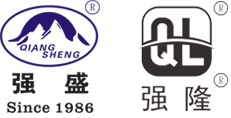Tongxiang Qianglong Machinery Co., Ltd. is high-tech China wholesale computerized flat knitting machine manufacturers, specialized in designing, developing, and manufacturing Knitting Machinery..
Computerized flat knitting machines are typically programmed using specialized software that allows users to create, edit, and store knitting patterns and designs. The programming process involves translating a design or pattern into a set of instructions that the knitting machine can follow. Here is a general overview of how computerized flat knitting machines are programmed:

Design Input:
The process begins with the creation of a digital design or pattern. This can be done using computer-aided design (CAD) software, graphic design software, or specialized knitting design software. The design can include details such as stitch types, colors, textures, and any other relevant specifications.
Pattern Creation:
In the software, the user creates a pattern by specifying the type and arrangement of stitches, colors, and other design elements. The software may provide a visual representation of the pattern as it is being created.
Graphical Representation:
The software often provides a graphical representation of the design, allowing the user to see how the finished knitted product will look. This can be essential for ensuring that the pattern meets the desired aesthetic requirements.
Programming the Machine:
Once the design is finalized, the pattern needs to be translated into machine-readable instructions. The software generates a program or code that contains the instructions for the knitting machine. This code typically includes details such as stitch types, needle movements, color changes, and any other relevant parameters.
Transfer to the Machine:
The generated program is then transferred from the computer to the flat knitting machine. This transfer can be done using various methods, such as USB drives, network connections, or other data transfer interfaces supported by the machine.
Machine Setup:
Before starting the knitting process, the machine needs to be set up according to the specifications of the design. This may involve loading the appropriate yarns into the feeders, configuring the machine's settings, and ensuring that the necessary tools and accessories are in place.
Testing and Calibration:
Prior to full-scale production, operators often run a test or sample to ensure that the programmed pattern is executed correctly. This may involve checking for any errors, adjusting tensions, and fine-tuning the machine settings.
Execution:
Once everything is set up and tested, the knitting machine is ready to produce the desired pattern. The machine follows the programmed instructions to knit the fabric according to the specified design.
Monitoring and Adjustment:
During the knitting process, operators may monitor the machine's performance and make adjustments as needed. This can include addressing any issues that arise during production.
It's important to note that the exact process may vary depending on the specific brand and model of the computerized flat knitting machine and the software used for programming. Manufacturers often provide user manuals and training materials to guide operators through the programming and operation of their machines.

 English
English 简体中文
简体中文
 Chinese
Chinese English
English











